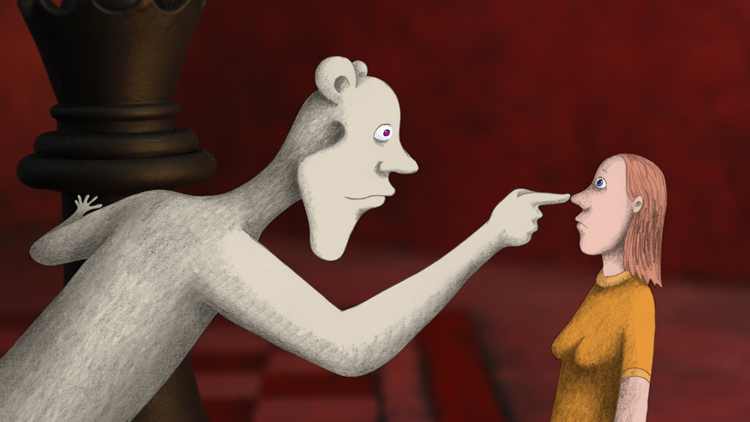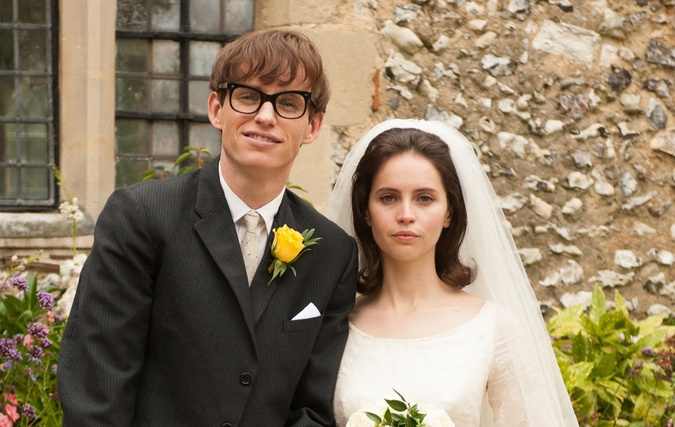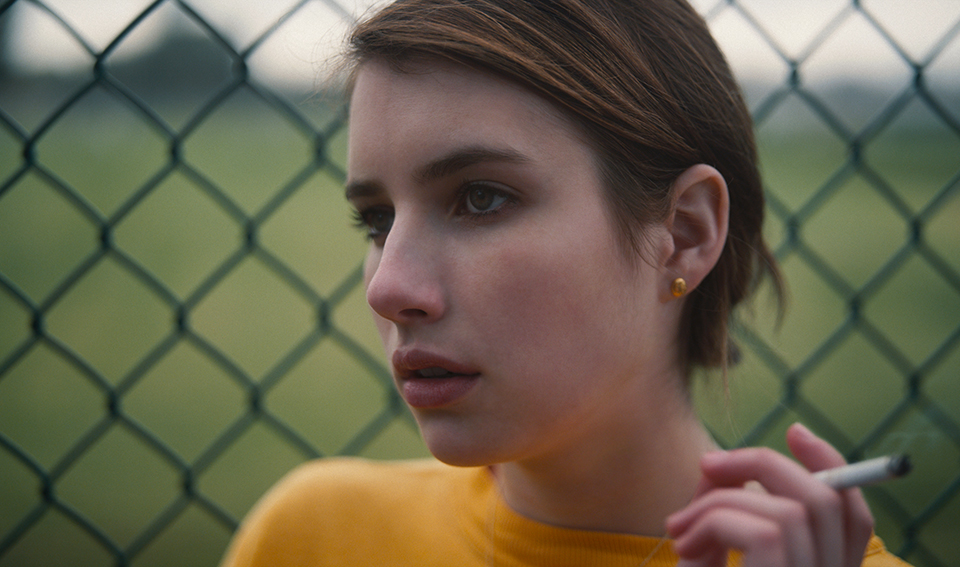The “crazy” woman character has been a staple of literature going as far back as Jane Eyre and a staple of films going as far back as Olivia de Havilland in The Snake Pit. Not coincidentally, “crazy” is the adjective most often used to dismiss a woman who disagrees with the opinions or the recounting of events of a man or group of men either online or elsewhere (the second most popular term of dismissal is “angry”). In recent years women writers like Kay Redfield Jamison have documented their own struggles with diagnosed mental illness, and an Australian TV series (on Pivot in the US), Please Like Me, has used the experience of the star and creator, Josh Thomas’s, own mother as a model for the sympathetic and nuanced portrait of the “Josh” character’s mother on the show: she has attempted suicide more than once and spent much of the last season as an inpatient at a mental hospital.
We have had few if any first-person accounts from “crazy” women filmmakers about how they see their own lives and minds. Animator and artist Signe Baumane’s first feature, Rocks in My Pockets, seeks to change that situation. Baumane (who also wrote the screenplay) focuses on five women’s stories of mental illness in two different generations of her Latvian family: her grandmother, Anna; and three of her cousins–Miranda, the artist; beautiful, studious Linda; music teacher Irbe; and finally, Baumane herself.
Early in the film, Baumane alludes to a longer history of mental illness in the family than the one she details. Her grandmother marries an older man who divorces his first wife so he can have another larger family (he wants 10 more children but ends up with eight) so more little Latvians can inherit what he thinks are his superior qualities. The grandfather’s ego was far greater than his accomplishments; his children in some scenes momentarily transform into DNA double helixes to remind us of how he sees them. But Baumane tells us he didn’t take into account his new wife’s family history, never asking about the members of her family who “died early” and “didn’t live up to their potential.”

Anna’s depression doesn’t manifest until after she starts having children, one after another, in an isolated town with a jealous husband who makes sure his young, pretty wife is far from any male neighbors. The family live on top of a sandy hill, so they cannot dig a well for water. Instead Anna has to travel back and forth up the hill to bring water in buckets from the river below, not just for the family, but also for the two cows and a horse. The animals alone needed 40 buckets every day.
The family goes through much hardship as the country is first annexed by the Soviets and then by the Nazis and then the Soviets again. During her many trips to the river Anna sees in the water a creature that looks like a cross between an oversized teddy bear and a sea monster beckoning her to come in. One day she does, but a poacher spots and rescues her. She had forgotten to put rocks in her pockets to sink.
Anna later sends her children to boarding school, since she can barely provide for them (her husband continues to live at home but we see him literally turn his back on the rest of the family). Sometime after he dies, she overdoses on Valium, the go-to drug of the country’s Soviet era, prescribed for everything from heart problems to the “mental deficiency” the regime considered mental illness to be.

Baumane’s slightly older cousin Miranda has no desire to get married, but a nice man pursues her and she relents. As she gathers wild orchids with a 16-year-old Baumane she tells her that this will be her last summer. Baumane thinks that Miranda means her last summer as a single woman and urges her to cancel the wedding. Miranda tells her she feels obligated to do the things that make the people who love her happy, and marries and has a child within the year. After her son is born, she tries to strangle herself, but her husband comes home early and saves her. “She never forgave him,” Baumane tells us. After spending much time in Soviet-era mental hospitals under heavy medication Miranda succeeds in killing herself when her children are older.
“You can’t learn from anyone else’s mistakes,” Baumane narrates. “You have to make your own.” Because Baumane becomes pregnant, her parents pressure her, when she is still young, to marry a man who seems to be descending into alcoholism. After her son is born she visits a psychiatrist and then she too is sent to a mental hospital, but is somewhat reassured when, just before she goes, she looks in a mirror and sees Miranda, who tells her to just drink a lot of water to dilute the medication she is forced to take. After Baumane is discharged from the hospital and divorces her husband, Baumane’s mother decides she is unfit to take care of her own son and raises him herself instead.
Baumane combines traditional hand-drawn animation (she at one time worked with Bill Plympton and some of the film evokes his distinctive style) with sets and some other elements made of paper maché. The exaggerated expressions of the human characters (who are sometimes hard to tell apart), along with Baumane’s narration–which at times, sounds a bit too much like an adult reading a story to a child–can be jarring. Waltz With Bashir and Sita Sings The Blues are two films that had better success in combining conventional animation with complex stories meant for grown-ups (which, like Baumane’s, have elements of autobiography), probably because both had tighter scripts than Baumane does. Baumane’s family history starts with her grandmother’s early suicide attempt in the river, backtracks to Baumane’s own suicidal ideation (she’d make sure to rub with soap the rope she’d hang herself with, so it wouldn’t catch on any edges and would wear adult diapers, so whoever found her wouldn’t have to clean up any urine and feces expelled from her dying body), then goes to the very beginning of the grandmother’s story, a runaround that both exhausts and confuses the audience.
But a lot of the imagery Baumane uses, in both the paper maché (the misshapen human characters and the houses with eyes are standouts) and the animation that has the look of illustrations for children’s books (work that Baumane has also done) like the teddy bear/sea monster, huge bottles of pills invaded by equally huge, long tongues and the psychiatrist’s giant legs bursting from under her desk under her immobile, sedated face, are unforgettable.
The creature who embodies mental illness in all of the women’s lives doesn’t look threatening. In fact, the creature is kind of a solace to several of the women–it dances with a delusional Linda while she wears a wedding dress for a groom who doesn’t exist. The creature’s appearance fits how the women see it themselves; Irbe describes the voices she hears as comforting, because they once warned her off a road before a vehicle came crashing through it.
Baumane, like some mental health activists who have been diagnosed themselves, doesn’t see medication as the answer (at least two of the women in her family were taking prescribed medication when they committed suicide). Her solution: to not withdraw into herself and her own pain when it threatens to overtake her and instead spend time in the company of others, waiting out her worst suicidal impulses seems like an anticlimax. But the method has apparently worked for her–keeping her alive and well long enough to make this vivid and beautiful film she labels a “quest for sanity.”
[youtube_sc url=”https://www.youtube.com/watch?v=gJcVnFripdc”]
___________________________________________________
Ren Jender is a queer writer-performer/producer putting a film together. Her writing. besides appearing every week on Bitch Flicks, has also been published in The Toast, RH Reality Check, xoJane and the Feminist Wire. You can follow her on Twitter @renjender






















